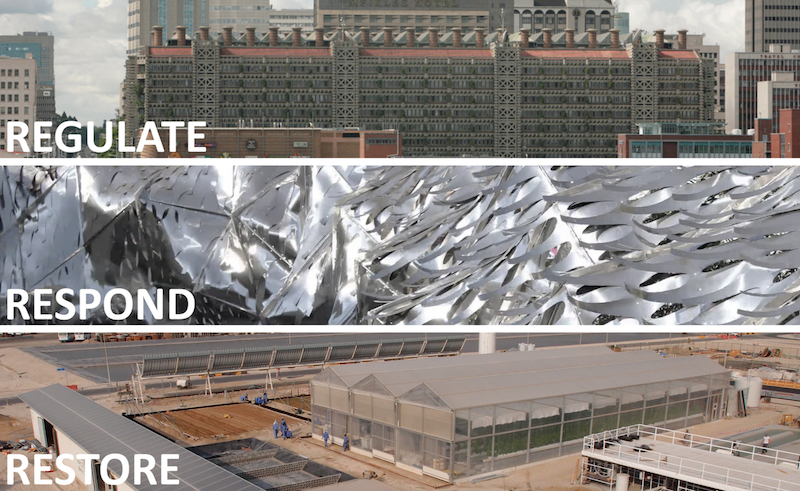Abstract
Our built environment—complete with highly mechanized HVAC systems that engineer ‘habitable’ space—sits as a primary perpetrator of exponentially rising CO2 concentrations, water scarcities, and growing desertification. A promising template for a ‘new approach’ seems to be nature itself. Designers, biologists, medical researchers, and engineers have been looking to nature for inspiration for centuries, yet in the past 30 years—driven by an urgency to find alternative, more sustainable methods for producing and consuming—there has been a surge of applications mimicking organism functions and ecological processes. The following study, investigates three cases that each employ nature’s prowess to address 21st century heat and water concerns: 1) the Eastgate Centre in Harare, Zimbabwe designed with natural ventilation based on termite mounds; 2) thermal bimetals that morph to regulate temperature, reminiscent of human skin; and 3) the Sahara Forest Project in Qatar which is developing a cluster of industrial laboratories that restore vegetation by mimicking how ecosystems encourage new growth. These three projects—ranging in scale from materials, to the building, to the urban system—suggest that biomimicry can provide a powerful model for not only using resources more effectively and efficiently, but also for addressing thermal regulation, water provision, and the survival of temperate ecosystems in the face of climate change.
